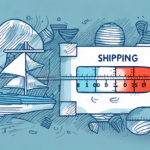How UPS Calculates Shipping Rates
UPS employs a comprehensive system to determine shipping rates, factoring in various elements such as distance, package weight, and box size. The primary basis for calculating the rate is either the actual weight or the dimensional weight of the package—whichever is higher. Dimensional weight accounts for the package's volume, recognizing that larger packages occupy more space in transit regardless of their actual weight.
Beyond weight and size, the type of service selected significantly influences shipping costs. UPS offers a range of services including ground, air, and international shipping, each with distinct pricing structures. Additionally, optional services such as signature confirmation or insurance can further impact the final rate.
UPS periodically updates its shipping rates in response to market conditions and operational costs. For the most current pricing information, customers should refer to the [UPS Rate Calculator](https://www.ups.com/ship/ratefinder) or contact UPS customer service directly. Understanding these rate calculation methods enables customers to make informed decisions and select the most economical shipping options.
Key Factors Influencing UPS Shipping Costs
Package Size and Dimensional Weight
The size of the box plays a critical role in determining UPS shipping rates. Larger boxes incur higher dimensional weights, leading to increased shipping costs even if the actual weight is minimal. It's essential to select a box size that closely matches the dimensions of the items being shipped to avoid unnecessary expenses.
Type of Shipment and Service Level
The nature of the shipment, including whether it's domestic or international, and the desired delivery speed (e.g., ground vs. expedited) significantly affect costs. Faster delivery services typically come at a premium.
Destination and Delivery Address
Shipping to remote or residential addresses may incur additional surcharges compared to commercial locations. The geographical distance between the origin and destination also impacts the overall rate.
Value of Shipped Items
High-value items may require additional insurance or security measures, increasing the shipping cost. Accurately declaring the value ensures proper coverage and avoids potential issues with lost or damaged packages.
The Role of Box Size in UPS Shipping Rates
Impact on Dimensional Weight
Choosing the appropriate box size is crucial for managing dimensional weight charges. Oversized boxes not only increase shipping costs but may also lead to additional surcharges imposed by UPS.
Protection of Contents
The type of product being shipped influences box size selection. Fragile items necessitate adequate padding and cushioning, which may require slightly larger boxes to ensure safe transit.
Compliance with UPS Size Restrictions
UPS enforces specific size limits for packages. Exceeding these limits can result in extra fees or refusal of shipment. Refer to the UPS Packaging Guidelines to ensure compliance.
Understanding Dimensional Weight vs. Actual Weight
Dimensional Weight Calculation
Dimensional weight is calculated using the formula:
Dimensional Weight = (Length × Width × Height) / Dimensional FactorFor UPS, the dimensional factor is 139 for domestic shipments and 166 for international shipments.
Comparison with Actual Weight
UPS charges based on whichever is greater: the actual weight or the dimensional weight. This ensures that shipping costs fairly reflect both the size and weight of the package.
Strategies to Optimize Weight Charges
- Use appropriately sized packaging: Minimize excess space within the box.
- Choose lightweight materials: Reduce the overall weight without compromising protection.
- Consolidate items: Ship multiple items in a single package when feasible to optimize space and weight.
Measuring and Selecting the Right Box Size
Accurate Measurement Techniques
To ensure accurate shipping rates, measure the length, width, and height of your package in inches and round up to the nearest whole number. Use a reliable tape measure and consider the dimensions of all contents, including any padding or cushioning materials.
Weighing Your Package
Weigh your package using a precise scale that can measure in pounds or kilograms. Include the weight of packaging materials to avoid discrepancies that could lead to higher charges.
Choosing the Right Box
Select a box that snugly fits your items while allowing space for necessary padding. Refer to the available UPS packaging options to find a suitable size.
Tips for Optimizing Box Size to Reduce Shipping Costs
- Measure and weigh accurately: Precision helps in selecting the most cost-effective box size.
- Avoid oversized packaging: Reduce dimensional weight by choosing the smallest box that accommodates your items.
- Use sturdy, lightweight materials: Protect your items without adding unnecessary weight.
- Consider shipping multiple items together: Consolidation can lead to savings on both weight and space.
- Utilize UPS's packaging resources: Take advantage of UPS-provided boxes and materials to ensure compliance and optimize costs.
Common Mistakes and How to Avoid Extra Fees
Using Oversized Boxes
Choosing boxes that are larger than necessary increases dimensional weight and shipping costs. Always select the smallest box that fits your items securely.
Underestimating Package Weight
Accurate weighing is essential. Underestimating the weight can result in unexpected additional charges.
Ignoring UPS Packaging Guidelines
Failing to adhere to UPS's packaging standards may lead to surcharges or refusal of shipment. Familiarize yourself with the UPS packaging guidelines.
Inadequate Protection of Contents
Insufficient padding can result in damaged goods, leading to returns and extra costs. Ensure that items are well-protected within the package.
Additional Fees and Surcharges
Beyond standard shipping rates, UPS may impose additional fees based on various factors:
- Residential Delivery Surcharge: Additional fee for deliveries to non-commercial addresses.
- Fuel Surcharge: Variable fee that reflects current fuel prices.
- Remote Area Surcharge: Applies to deliveries in hard-to-reach locations.
- Declared Value Surcharge: Extra cost for packages with high declared values.
Understanding these potential surcharges can help in accurately estimating shipping costs. For detailed information, refer to the UPS Surcharges page.
Impact of Destination Address Type on Shipping Rates
The nature of the destination address—whether residential or commercial—can affect UPS shipping rates:
- Residential Addresses: Often incur additional surcharges due to factors like access constraints and higher delivery costs.
- Commercial Addresses: Typically benefit from lower shipping rates and fewer surcharges.
When preparing shipments, categorize addresses appropriately to anticipate and manage potential additional costs.
Negotiating Better UPS Rates Based on Box Size
Businesses shipping large volumes can negotiate favorable UPS rates by demonstrating consistent shipping patterns and optimized packaging practices:
- Leverage Shipping Data: Use data on shipping volumes and box sizes to highlight efficiencies and potential savings.
- Highlight Cost-Saving Measures: Showcase how optimized box sizes reduce overall shipping costs.
- Collaborate with UPS Representatives: Engage in discussions to identify opportunities for rate reductions based on your shipping needs.
Building a strong relationship with UPS can lead to customized rates and better terms tailored to your business requirements.
Conclusion
UPS shipping rates are significantly influenced by box size, among other factors. By understanding how UPS calculates rates and the importance of selecting the right box size, businesses can effectively manage and reduce their shipping costs. Accurate measurement and weighing, adherence to UPS guidelines, and strategic negotiation are key components in optimizing the shipping process for enhanced efficiency and profitability.




















